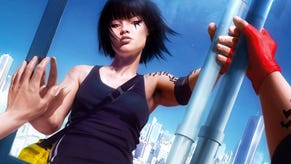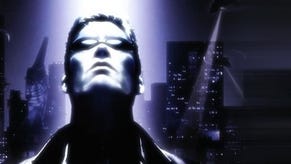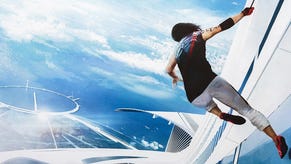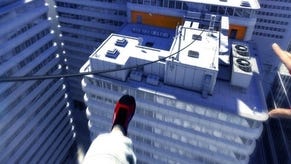Mirror's Edge
Faithful.
We can't help loving it. Mirror's Edge may have been short, narrow, brutal, disorientating and bound in cliché, but once you learned to read between the racing lines of its serene adventure playground and embraced its economy of control, it was hard not to skip, dive and rebound across its troubled rooftops with a quantum of glee. And while there will be the usual complaints about SecuROM (five authorisations) around this belated PC port, after half a dozen hours retracing our console steps it's hard not to argue it's the best version.
Mirror's Edge puts you in the trendy first-person trainers of Faith, a messenger for a skyscraping underground delivery network that vouchsafes freedom of communication in a glimmering city that seeks its repression, and she does this by running, jumping and skidding around rooftops, guided by a traditional movement controls and context-sensitive "up" and "down" buttons, which account for jumps, vaults, wall-runs and ledge-grabs, and skids, crouches, rolls and release respectively. With little more than these and a bridging 180-degree spin button, she can navigate virtually any series of obstacles with fluent parkour acrobatics, keeping an eye out for the guiding red visual signature of the next best leap of faith.
And, for the benefit of latecomers, we do mean virtually any series of obstacles. DICE has arranged a network of wooden ramps, chest-high pipes, pronounced air conditioning units, roof-access pods, cranes, trapeze, zip-lines, scaffolds and wooden boards to assist, and within an hour of starting you can be chaining a wall-run to a trapeze to a tucked roll under a vent into a jump from a stepped crate onto a zip-line and a soft landing on tarpaulin.

On consoles, however, it often took longer than that. Up and down were easy to master, but analogue directional control and DICE's reluctance to correct your course - even slightly - often snagged you, or left you to slowly, agonisingly draw yourself over the lip of a roof-edge, or sent you plummeting to your doom and the commiseration of a sympathetic checkpoint. Look down and you could see your feet. Look down and you wouldn't have time to look up again.
Thanks to the mouse, not so on the PC. With the sensitivity at a decent level, a decade of twitching guns onto monsters rescues you from misjudgement. You can glance down to see where you're jumping from, and you can line up your jumps and slides precisely. Keyboard control is just as fluent, with movement on WSAD, the up and down controls on spacebar and left-shift, the 180 spin on Q and other occasional prompts - like using objects, slowing time and kicking down doors - spread sensibly around in the main controls' immediate vicinity. Hand-to-hand combat is on the mouse buttons, which blends more intuitively into your acrobatic routines, and gun combat - though incidental to the whole - is easier with the mouse. And of course it's all customisable. Plug in an Xbox 360 controller and you can see what you're not missing, complete with the correct button prompts in menus and tutorials.



.jpg?width=291&height=164&fit=crop&quality=80&format=jpg&auto=webp)





